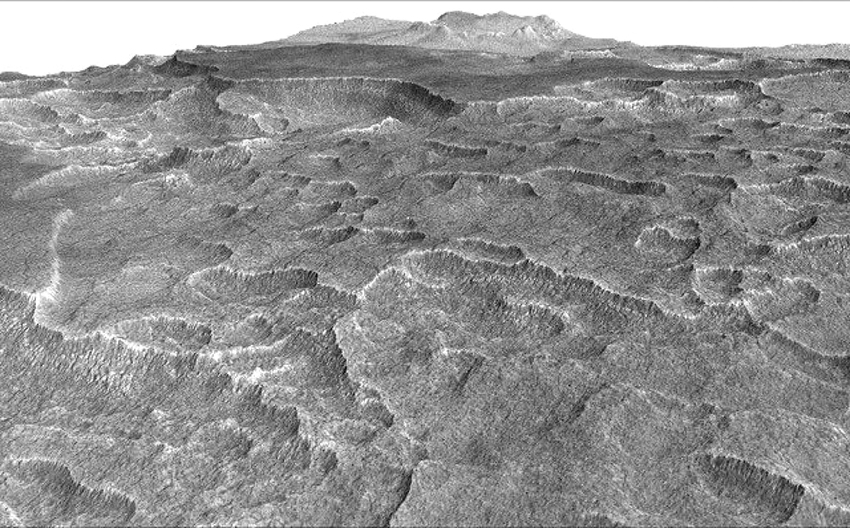UT researchers have discovered that Mars’ ice deposits hold nearly as much water as Lake Superior, the largest of the Great Lakes.
Using data from NASA’s Mars Reconnaissance Orbiter, researchers studied part of Mars’ Utopia Planitia region, a basin created by a large impact on the planet’s surface early in its history that has since been filled with water. Using a ground-penetrating device known as a Shallow Radar, scientists analyzed data from more than 600 overhead passes and discovered the ice deposit, which is larger than the area of New Mexico and ranges from 260 to 560 feet in thickness. The ice deposit is underneath a layer of soil that scientists estimate to be anywhere from 3 to 33 feet thick, according to a UT news release.
“This deposit probably formed as snowfall accumulating into an ice sheet mixed with dust during a period in Mars history when the planet’s axis was more tilted than it is today,” Cassie Stuurman, a graduate research assistant at the Institute for Geophysics in the Jackson School of Geosciences, said in an article to NASA.
Joe Levy of the University of Texas Institute for Geophysics, a co-author of study, said the discovery of this ice deposit will further understanding about the history of Mars and could serve as a possible resource for future astronauts.
“The ice deposits in Utopia Planitia aren’t just an exploration resource,” Levy said in the news release. “They’re also one of the most accessible climate change records on Mars. We don’t understand fully why ice has built up in some areas of the Martian surface and not in others. Sampling and using this ice with a future mission could help keep astronauts alive, while also helping them unlock the secrets of Martian ice ages.”





















